ca. 1860-1870 (?)
Here is an unusual Boucher banjo that recently surfaced in Virginia.
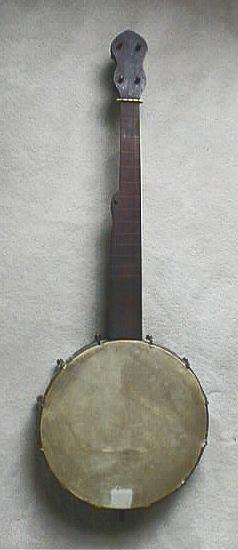

The simple hoop pot is 12" in diameter and 3 1/4"
deep
with a 3/8" wall.
The overall height of the banjo top to tip is 26 1/2".
The neck appears to be a wood of medium hardness,
the
pot is oak.
The peghead is far simpler than the customary early
scrolls
with decorative behives,
but it is interesting to still find the extended ivory
nut.
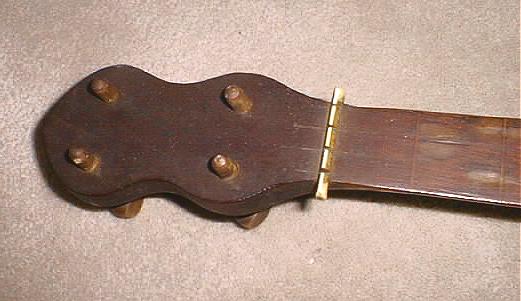
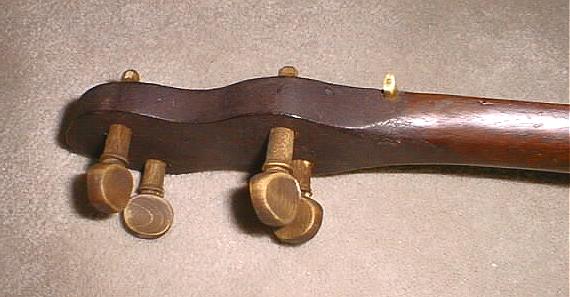
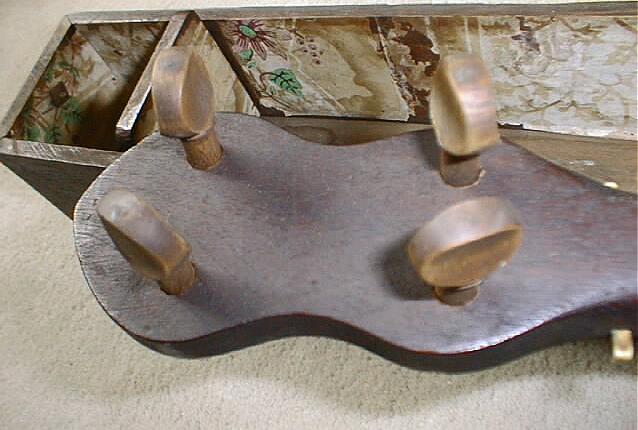
The single ogee, a Boucher characteristic, is also somewhat subdued.
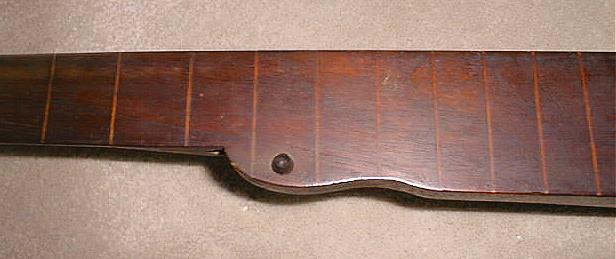
Unfortunately, somebody modernized the banjo by
drilling
a 5th peg hole
in the side of the neck and using the original peg site
as a 5th string nut.

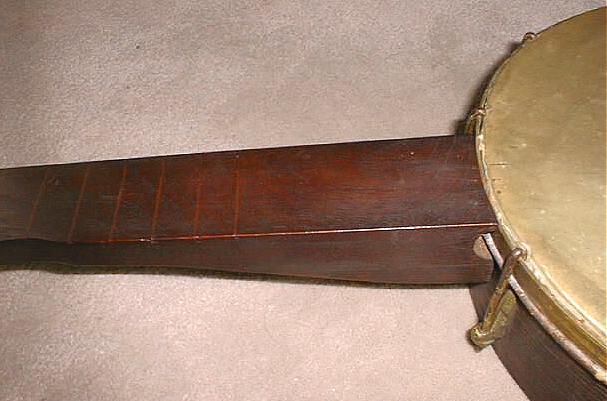
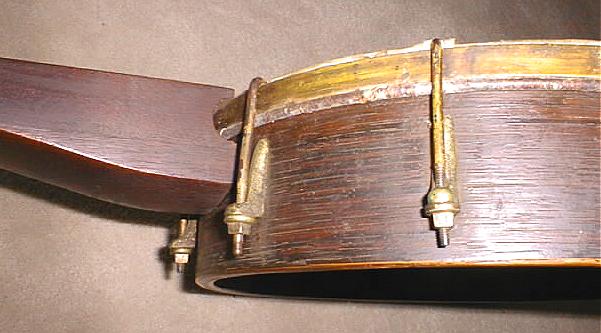
The typical two-piece Boucher heel bears the makers stamp.
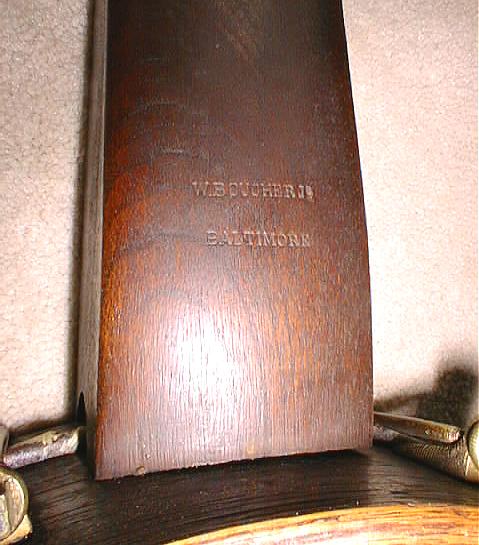
The far end of the dowel stick extends out of the
pot
providing
a place to tie on the tailpiece. As above, somebody
drilled
a hole
in the dowel stick end to attach a cheap modern (ugh)
metal tailpiece.

Here is a top view of the rivited tension hoop joint.
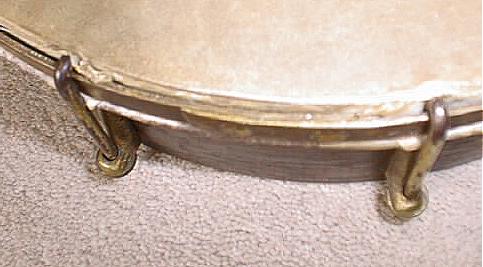
The hardware is very similar to a late presentation Boucher, but smaller.
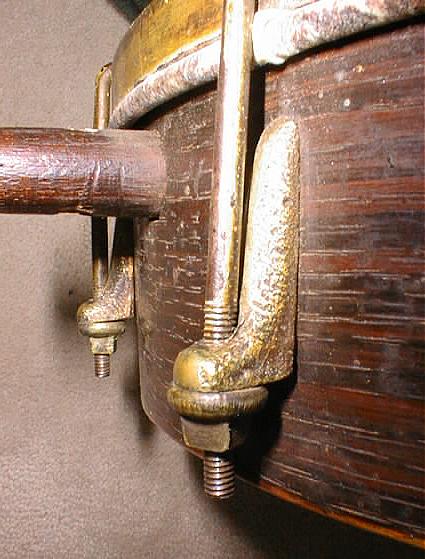
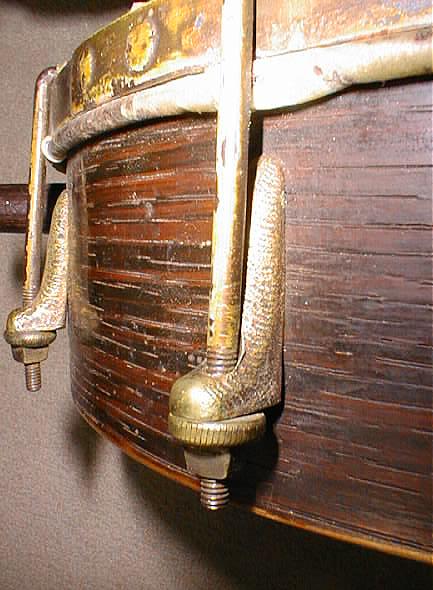
The dowel stick is secured at the entrance opening with a steel pin.
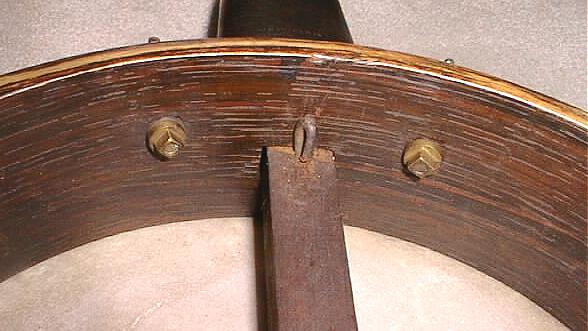
While the exit opening has the usual support block.
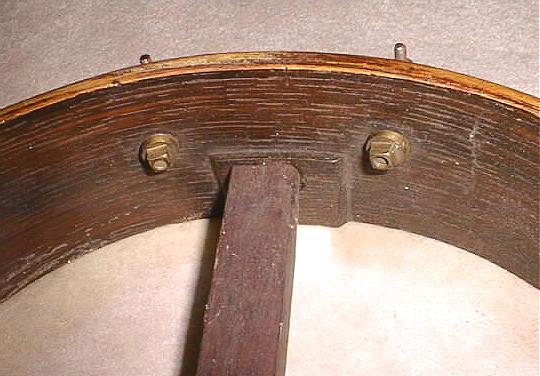
A closer look at the block reveals a serial number (?) XVI.
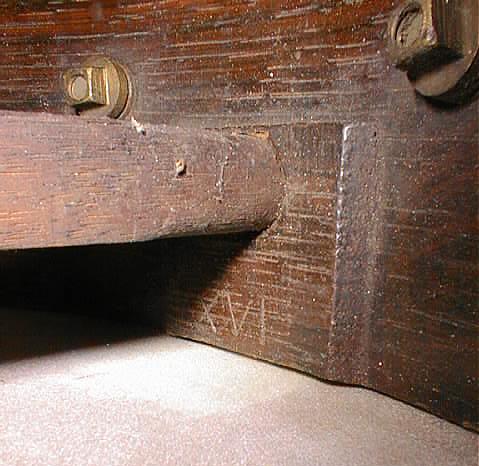
And using a mirror to view the underside of the
dowel
stick
we see a reversed image of that same number impressed
there.
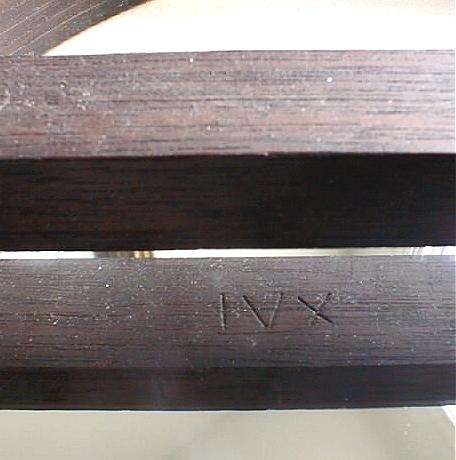
The banjo was found in an ancient wooden case.
The white square on the skin is probably a spot in a
recent
skin that was covered by the metal tailpiece when the
skin
was artificially aged. There also appears to be
a recess cut
into the top of the case to make room for that same
tailpiece.

The outside of the top of the case has bone
decorations
and a marquetry wooden star in the center. The
handle appears to
be later than the case, but also an antique.
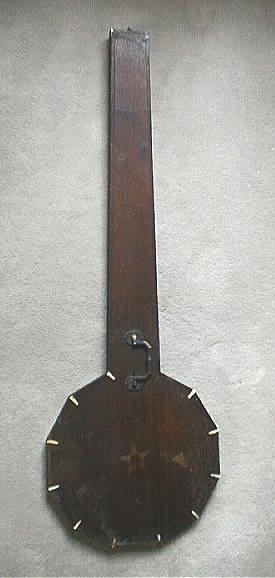

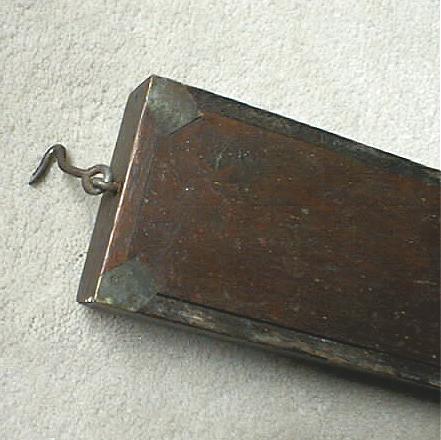

The inside of the top of the case is lined with wallpaper.
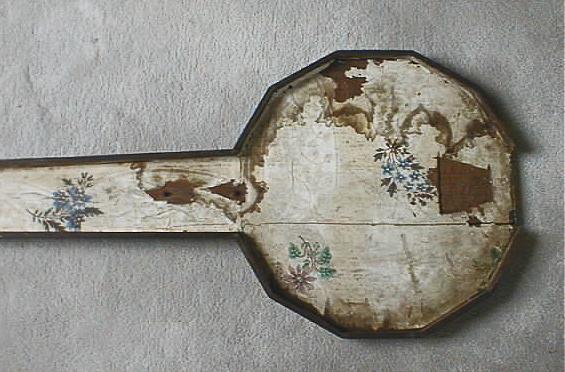
There is a small compartment in the top of the case.
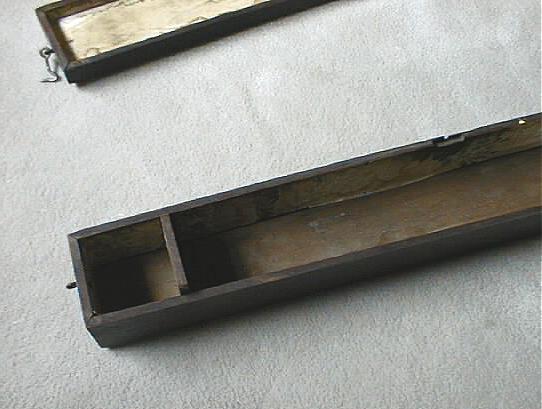
The bottom appears to have suffered some water and
bug
damage.
The hinged block at the bottom has also broken off.
The banjo JUST fits in the case with the bridge (and
tailpiece?)
removed.
That casts doubt on the possibility that the case is
original to this banjo.
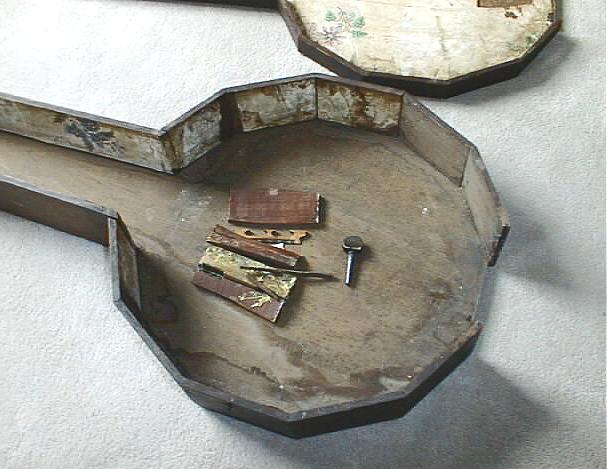
I welcome any comments or questions about this
instrument.
I would
like to place it in its proper historical context.
The entire site © 2002 HSD - All rights reserved.